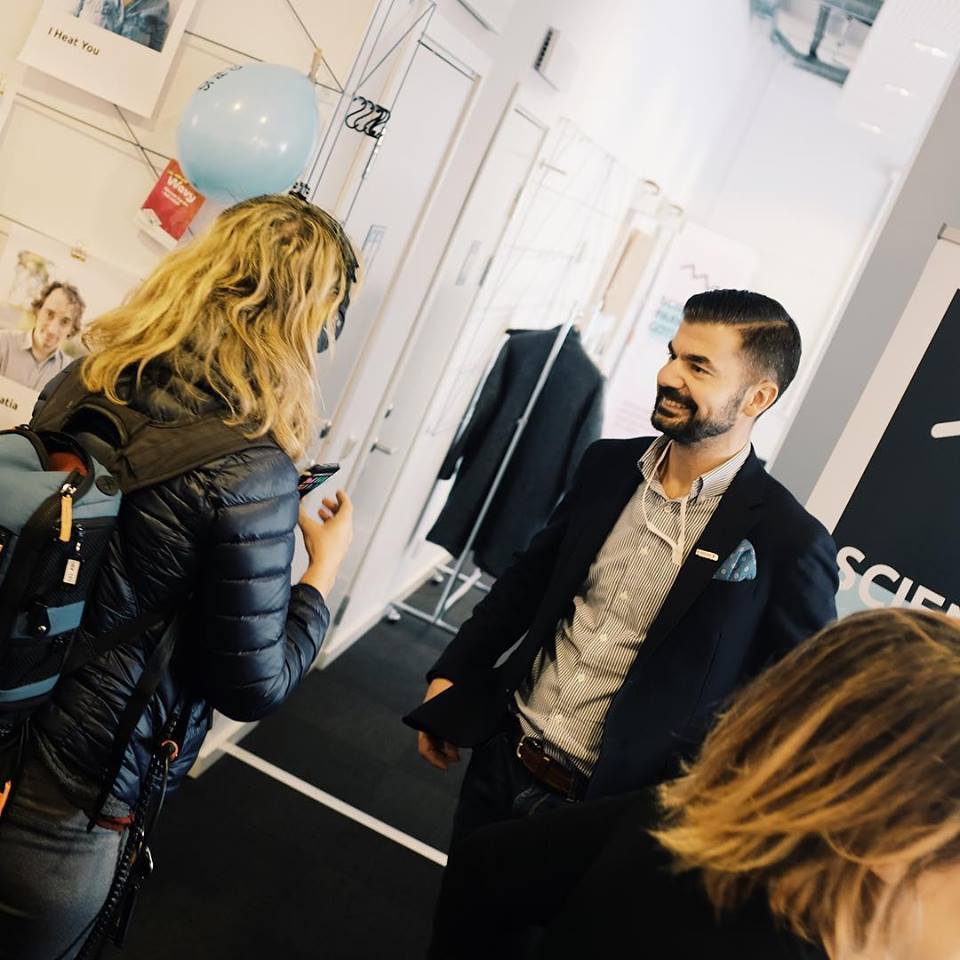Logistics from an eCommerce perspective is essentially the art of procuring and/or producing goods for eventual delivery to the customer and meeting the ever increasing expectation for fast and convenient delivery. It’s a delicate balance to meet these expectations at the same time as to manage one’s own costs and ensure that suppliers also work effectively to keep things running smoothly.
From a customer perspective, a lot can be done by any online merchant to drive the best experience before, during and after delivery. Providing extremely clear product descriptions and information online emerged as a recurring theme in minimising returns. Besides great imagery and descriptive text, there are many industry specific innovations such as interactive sizing guides (see Zara and Uniqlo) for clothing as well as the use of video and user reviews which have a huge impact on keeping levels of returns at or below the typical levels of 11%.
Personalized and creative packaging to win your customer
Markus reminded participants that for online-only retailers, the only physical interaction they will ever have with their customer is when they receive and open a delivered package. It’s no surprise that many stores have started to use branded packaging and to add personalised messages to their deliveries – driving the unboxing community online. For startups who can’t afford personalised packaging, it’s easy enough to use an ink stamp on standard packaging with a company logo or message and find other creative methods to give a personal touch. Markus’ example of shoe store Flattered adding a spray of perfume to their most expensive wedding shoes was a creative example!

Think smart and stay environmentally friendly
The appropriate use of packaging from an environmental perspective is another factor with many customers highlighting disappointment with companies that go overboard on packaging and protecting goods – ironically this can also drive a lot of unnecessary cost for postage since it is rated on package volume as well as weight! Smartly packaged goods can still be delivered directly to the letterbox – especially of value in Sweden with such a huge volume of deliveries going straight to supermarket or kiosk agents. Even effective printing of shipping and return information on less paper makes an impact.
Use all opportunities for meaningful engagement
As an order is made there are several typical moments that are opportunities for meaningful engagement with customers to improve the logistics flow. Checkout, order confirmation, shipping notifications and delivery confirmations are all potential moments to provide an improved experience with product tips, advice, complementary offers and raise the fidelity of experience. At the very least, providing a more personal and branded HTML message is an improvement over technical confirmation emails and this can be easily standardised with most off-the-shelf web systems.
Shipping to the customer is a recurring topic when it comes to logistics. When it comes to shipping, provide concise and definitive shipping estimates as early as at product pages and certainly during checkout and confirmation. The availability of stock data is allowing stores to even list stock availability at their sub-suppliers as a further level of insight. Providing quick and easy access to actual shipping status after an order is a no-brainer, but it’s important to make this easily accessible to customers with direct links to status information or embedding the latest information directly on your own profile pages. Obliging users to copy tracking numbers over to a third party shipping site diminishes the experience.
Give the customers all the information you can
When it comes to actual delivery lead time, it’s fine that a product might take a few days longer to ship as long as you are clear up front about your estimates. Indeed, the consensus among attendees was that willingness to pay for delivery services is increasing as better and more convenient options are starting to become available such as home delivery at more specific times and this is an important way to motivate a move away from universal free shipping. Offering environmentally responsible shipping options is another approach to motivate the very real costs of shipping.
The reality however for companies is that while it’s possible to sustain the best possible customer experience for availability and fulfilment of products, the capital costs of maintaining a huge assortment and the operational costs of same-day delivery are likely not sustainable so a constant balance and prioritization needs to be made between sustaining a great experience whilst managing costs.
Count your logistics costs!
Markus covered some key benchmarks of online retailers. Typically, companies should expect to have 50% of their logistics costs to go towards transportation – both towards customers but also from suppliers and partners. The other 50% will go to related employee costs, administration, storage, packaging and logistical IT systems. This should normally represent around 10-15% of total turnover. An important aspect for startups is to properly factor in your own personal costs as a company grows – if you are spending too much of your own time in packaging and sending goods then you are diverting valuable time away from growing your business in other ways.
When do you need a really systematic approach?
A typical threshold for startups comes when they exceed 50 deliveries per day and from there on, the need for a more systematic approach to storage, packaging and shipping starts to arise – this will start with simple things such as the setup of a packing station to the layout of warehouse shelves.
From an overall cash flow perspective, companies should expect to have up to 30% of their annual turnover bound up in the stock that they are holding and aim for a full stock turnover a little over 3 times a year. Companies producing their own goods on demand naturally don’t have this situation but it’s an important benchmark for those companies curious about how broad an assortment to stock at any moment. Tight relationships to suppliers with quick procurement and good data will allow stores to stock a little less of each product and instead enable them to experiment with broader assortments.
In summary, a focus on the core aspects of logistics that affect the customer experience is the best place to start in creating effective and efficient logistics.
Written by:
Daniel Freeman
Affärsutvecklare, Science Park Gotland




